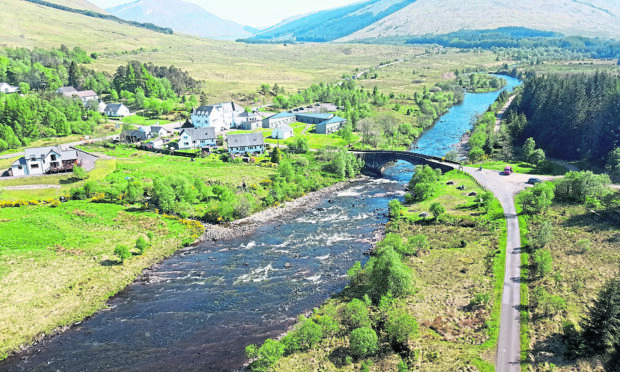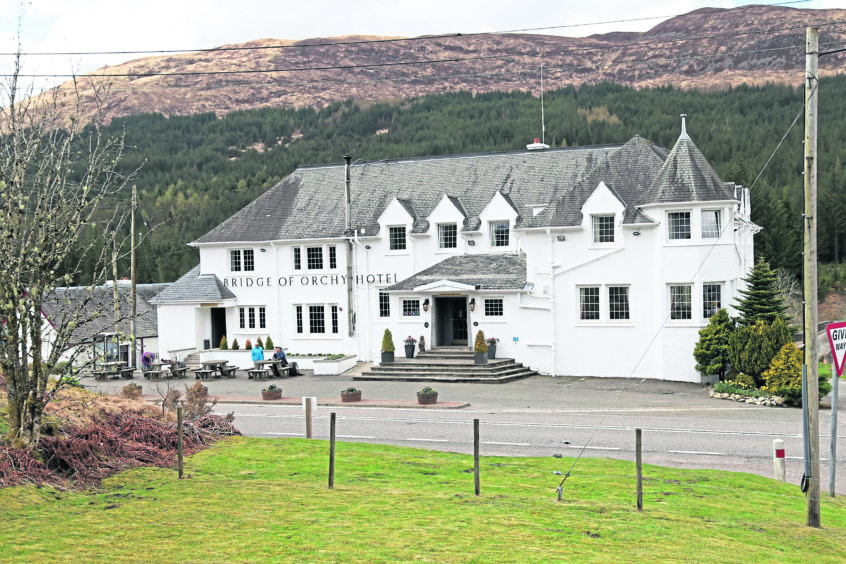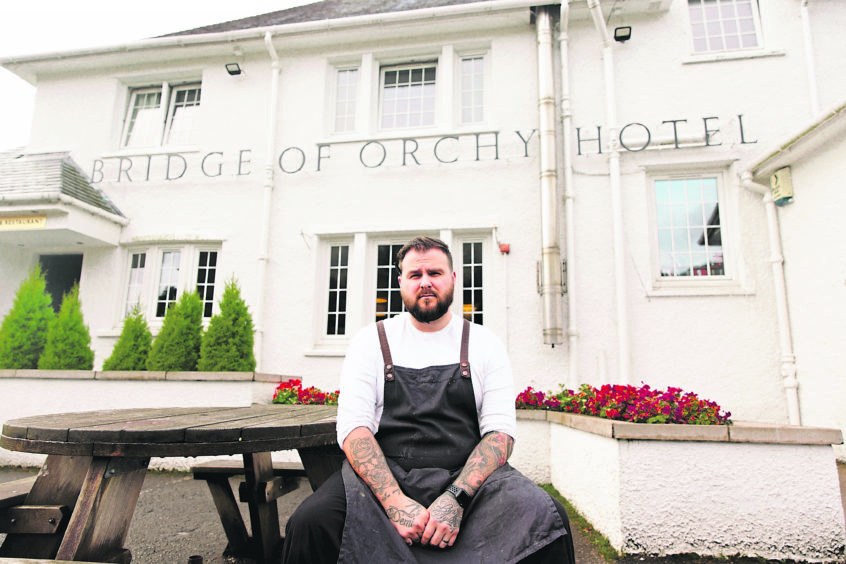Making your way to Bridge of Orchy, in rugged inland Argyll, can be a pleasure in itself, however you choose to do it.
Travelling from north or south, by car, train, on foot or by bike on the renowned West Highland Way, it is a journey that offers ever-changing views of some of the finest scenery Scotland has to offer.
On a sharp, clear day, the 105-mile road trip down the A82 from Inverness offered a spectacular prelude to a short break.
After driving the length of Loch Ness, to bustling Fort Augustus, the route continued through the glorious Great Glen, where, on the day, snow-dusted mountain tops were reflected in mirror-still waters.
Having briefly joined the day-trip minibus crowds to photograph the evocative Commando Memorial, near Spean Bridge, and the towering peaks of the Ben Nevis range beyond, it was on to busy Fort William for a coffee and cake stop before setting off on the remaining 40 miles.
The final stage of the journey was as rewarding as the first. Leaving the sparkling waters of Loch Linnhe behind and turning inland at Ballachulish, the route climbed amid the brooding buttresses of Glencoe to emerge on to the open expanses of Rannoch Moor.
The bleak, but, on a good day, beautiful, boggy moorland extends for more than 50 square miles and is designated a Site of Special Scientific Interest (SSSI) and Special Area of Conservation. Fans of the 1996 film Trainspotting may remember the moor as the place where the gang of Edinburgh druggies went for a “breath of fresh air”, arriving by train at Corrour Railway Station.
Leaving the moorland behind, the road meanders down to Glen Orchy, the 11-mile-long river valley at the head of which sits Bridge of Orchy.
A welcome sight for weary travellers over many decades, the settlement is little more than a scattering of buildings, clustered round the attractive white-painted Bridge of Orchy Hotel, which sits prominently by the roadside.
A magnet for climbers and hillwalkers, the riverside setting is stunning, with Beinn Dorain and Beinn an Dothaidh, both Munros at 3,524ft and 3,267ft respectively, towering over the hamlet to its east, and forest and hills to its west. Other mountains over 3,000 feet in the area are Beinn Mhanach, Beinn a’Chreachain and Beinn Achaladair.
What, if anything, the community was called before the river crossing was built is not clear. Behind the hotel, the single-arch bridge over the fast flowing white waters of the Orchy that gave it its name, dates back to 1751. It owes its existence to the massive government programme in the wake of the 1715 Jacobite uprising, which saw the building of 1,200 miles of military roads and 700 bridges in the Highlands between 1725 and 1767 as a means of moving troops rapidly to quell rebellion.
The structure was built by Major William Caulfeild, who continued the work of General Wade, and a stretch of the military road it carries forms part of a section of the West Highland Way.
For those who fancy a less arduous walk while in the area, a stroll on the military road in the direction of Rannoch Moor and a short climb are rewarded with dramatic views across Loch Tulla and the Black Mount.
Walkers, climbers, anglers, canoeists, wildlife enthusiasts, passing travellers and those just seeking a quiet break, have long found a warming welcome by the roaring fire in the Bridge of Orchy Hotel’s bar.
The four-star hotel’s original two-storey building houses 10 well-appointed bedrooms, the pub, a bistro and dining room. In 2013, an expansion saw a further 21 rooms added in three annexes in its grounds. The hotel also has a one-bedroom cottage as part of its accommodation offering.
On our visit, we stayed in a comfortable, contemporary double room in the timber-clad Glen Orchy View annex, with French doors opening on to a private decking area offering fine views down the valley.
Under the leadership of multiple award-winning head chef David Hetherington, the Bridge of Orchy Hotel is on a mission to become a “foodie haven in the Highlands”.
Mr Hetherington, a former MasterChef: The Professionals contestant, who joined the hotel from the Loch Lomond Arms Hotel, in Luss, last year, was named Provenance Chef of the Year in 2018.
Creating menus using seasonal Scottish ingredients and working with local suppliers including Darach Croft, on the Ardnamurchan Peninsula, and Duntarrin Farm, by Oban, among the initiatives he has introduced at Bridge of Orchy was a six-course food and wine tasting last St Andrew’s Day.
For dinner on the night of our stay, we enjoyed one of his signature dishes, pork belly with bacon jam and crackling, as we watched the sun go down over the hills from a window seat in the bistro.
The next morning we returned to the same spot to indulge in a fine full Scottish breakfast before, slightly regretfully, setting off back up the A82.


